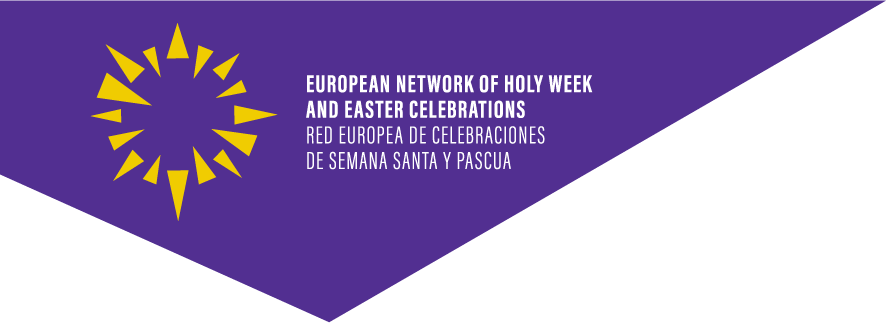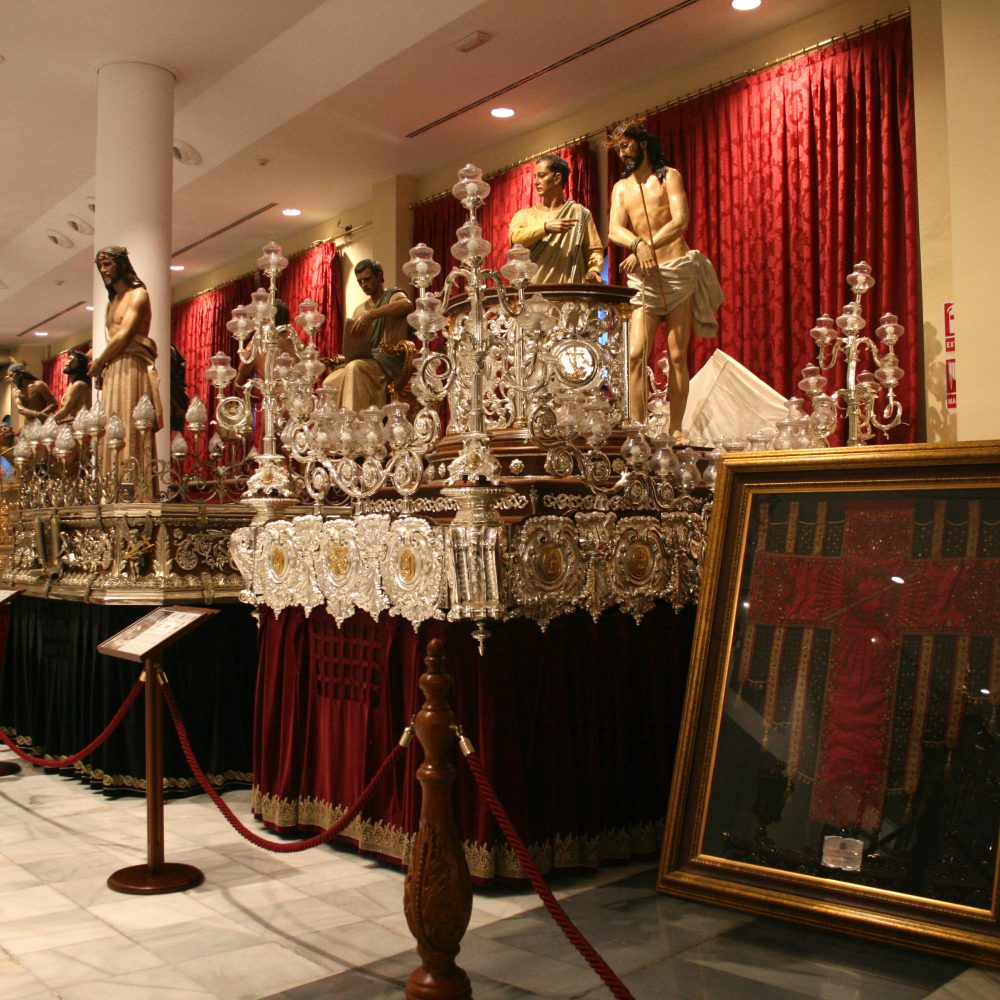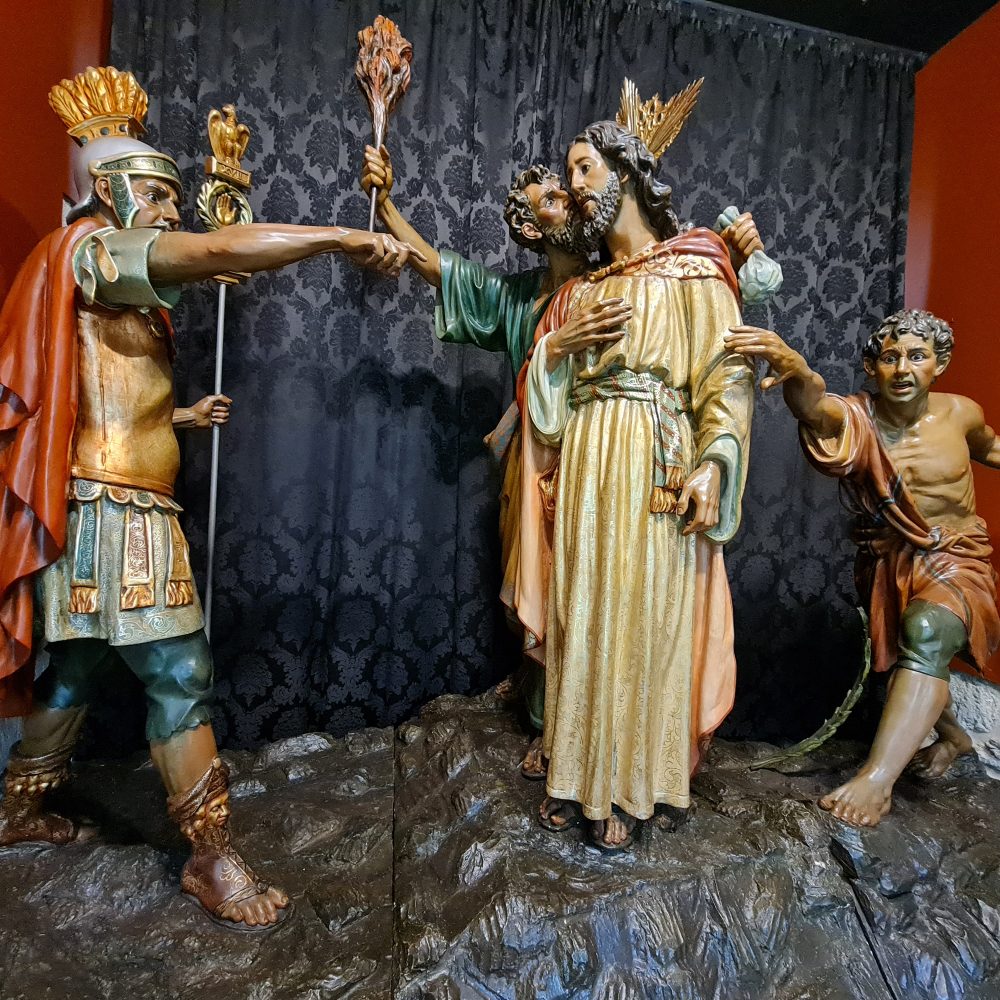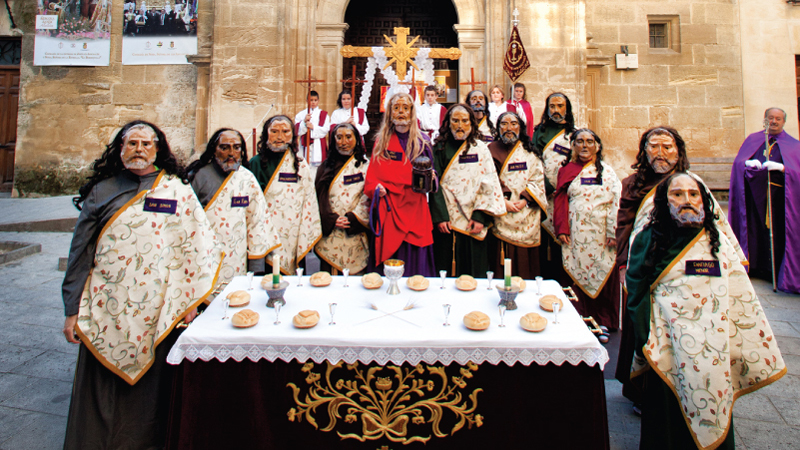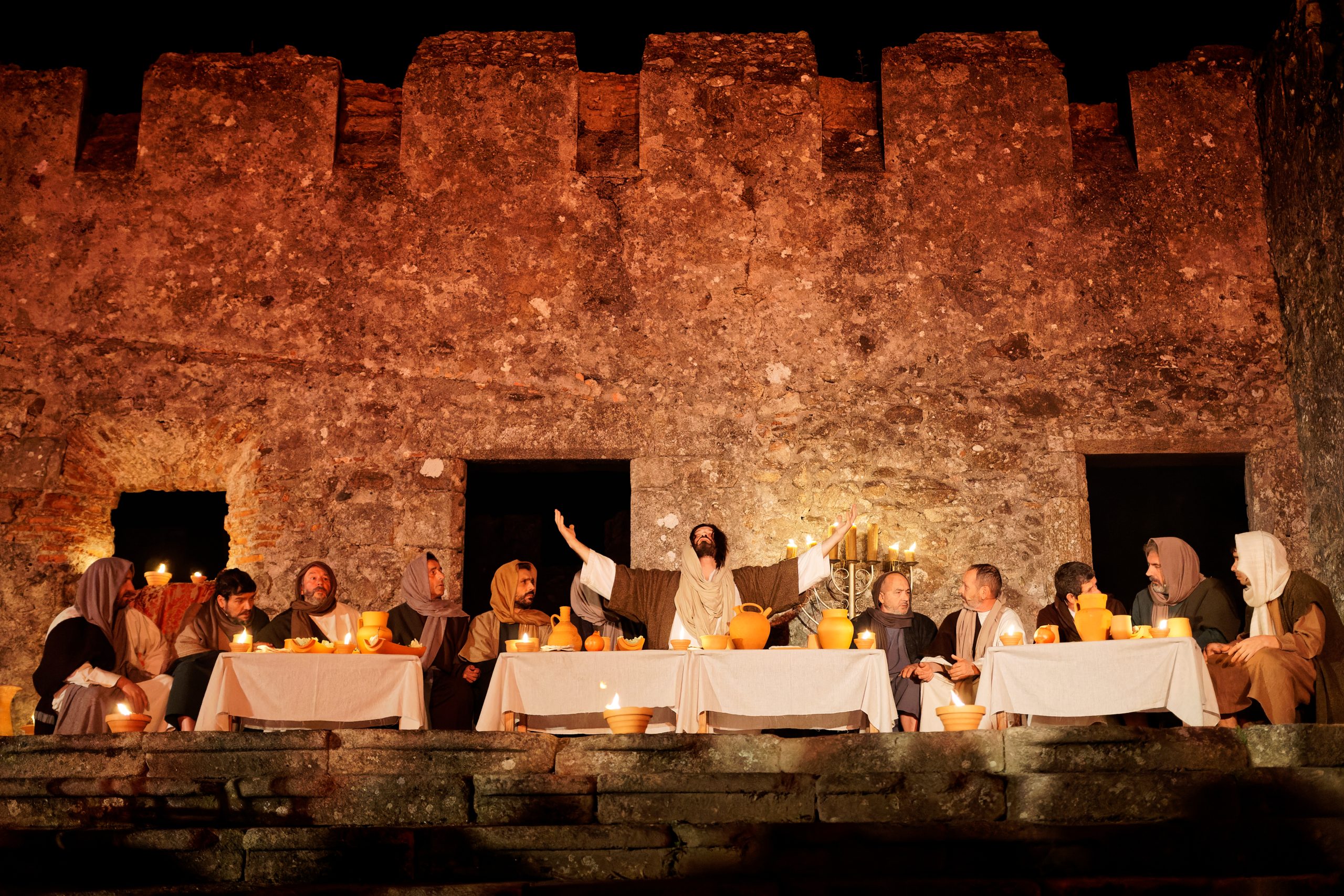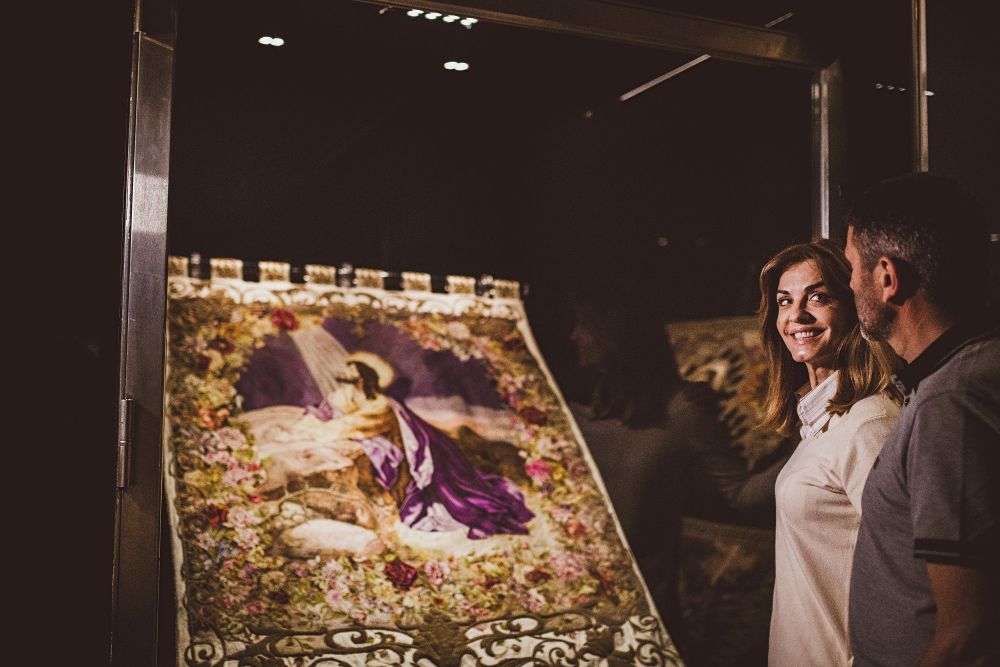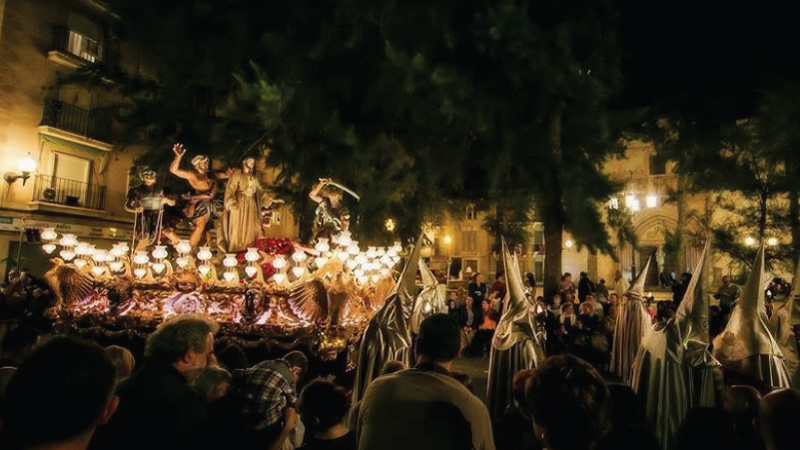
Fifteen museums that show the tradition of Holy Week from the European Network of Holy Week and Easter Celebrations
The European Network of Holy Week and Easter celebrations was created in 2019 by bringing together 18 municipalities from the countries of Spain, Slovenia, Italy, Malta and Portugal. Within the framework of the activities they carry out in order to promote and disseminate cultural heritage, both material and immaterial, related to the celebrations of Holy Week and Easter, today we talk about the fifteen museums located in these municipalities that, permanently , show the world this tradition.
These spaces are a true reflection of the fact that the presence of Holy Week lasts throughout the year, beyond the dates of its celebration, a tradition that has significant social and cultural support and that stands as an attraction that shows the local way of life and the social agents that sustain it, leading to the preservation of rituals and traditions with centuries of history that represent a living heritage without equal. Museums are an attractive place to discover deeply rooted traditions in the aforementioned societies and that allow us to discover their heritage and culture in an authentic and unique way, beyond the traditional tourist circuits.
In all of them, numerous pieces await that have been preserved over the centuries and that represent the idiosyncrasy of these traditions inherited from generation to generation. In many cases, these are community spaces run by the existing confraternities and brotherhoods in these localities. In other cases, they are local museums that dedicate a place to show the traditions linked to these celebrations. Its opening to the public serves as a tool to get to know Holy Week outside its celebration period and keep it alive throughout the year.
Museums of the European Network
The museums that are part of this initiative are: the Spanish, Ecce-Homo Brotherhood house in Alcalá la Real, Buen Fin Brotherhood Sacred Art Museum of Cabra, the Museum of the Sacramental Brotherhood of San Gil of Écija, Amor y Paz Brotherhood House of Lucena, Cristo de la Columna Brotherhood House-Museum in Lucena, the Baena Holy Week Exhibition, the Brotherhood Houses of Carmona,‘Holy Week in Puente Genil’ permanent exhibition in Puente Genil in Puente Genil; the muBBla, Paso Blanco Embroidery Museum in Lorca, the MASS. Blue Museum of Holy Week in Lorca, Orihuela Holy Week Museum and ‘Holy Week in Viveiro’ permanent exhibition in Viveiro; the Caltanissetta Holy Week Museum in Italy; The Inquisitor’s Palace the National Museum of Ethnography at Birgu in Malta; and the Skofja Loka Museum in Slovenia. The website of the European Network (www.holyweekeurope.com) shows a very complete guide detailing the heritage housed in these fifteen museums.
‘The Outstanding Piece of the Quarter’
Along with this guide, since November 2021, the initiative ‘The Outstanding Piece of the Quarter’ has been carried out, which has born as a result of the joint work of museums in order to make their spaces visible, the importance of the goods they house and generate a projection for the cultural attraction they are. Sculptures, paintings, embroideries, tunics or pieces of gold work will be some of the pieces that stand out each week, through the social networks of the European Network (Facebook and Instagram).
To date, pieces have already been presented such as the Volto Santo Reliquary of the Inquisitor’s Palace the National Museum of Ethnography, Birgu, Malta; The Cross of Hope of Škofja Loka Museum, Slovenia; the Ecce-Homo and the signs of Passion of Ecce-Homo Brotherhood house, Alcalá la Real, Jaén; the Image of Fallen Jesus of Buen Fin Brotherhood Sacred Art Museum, Cabra, Córdoba; The Cloak of Queen Esther of muBBla, Paso Blanco Embroidery Museum, Lorca, Murcia; the Olive branch of our Mother of Peace of Amor y Paz Brotherhood House, Lucena, Córdoba: the Procession Cape of our Lady of Peace and Hope of Cristo de la Columna Brotherhood House-Museum, Lucena, Córdoba; the Cross Emblem, Confraternity of the Ecce-Homo of Orihuela Holy Week Museum, Alicant; The Devil and Death of ‘Holy Week in Puente Genil’ permanent exhibition, Puente Genil, Córdoba, and The Arrest of Jesus or Kiss of Judas of ‘Holy Week in Viveiro’ permanent exhibition, Viveiro, Lugo.
During the current four-month period, which began on March 2, coinciding with the beginning of Lent and which will be in force until July 1, the following pieces will be exhibited: the pictorial work of Ecce-Homo in the House-Brotherhood of the Lord of the Ecce-Homo of Alcalá la Real (Spain); the image of Jesús Caído in the Museum of Sacred Art of the Brotherhood of Buen Fin de Cabra (Spain); the exit cloak of María Santísima de la Paz y Esperanza in the Museum Brotherhood House of the Brotherhood of the Column of Lucena (Spain); the Olive Branch of Our Lady of Peace (Campanitas) in the Brotherhood Houses of the Brotherhood of Love and Peace in Lucena (Spain); the Insignia Cross of the Brotherhood of Ecce-Homo located in the Museum of Holy Week in Orihuela (Spain); the Mantle of Queen Esther, in the muBBla, Paso Blanco Embroidery Museum in Lorca (Spain); the Arrest or Kiss of Judas belonging to the Brotherhood of the Arrest located in the Permanent Exhibition of Holy Week in Viveiro (Spain); The Devil and Death in the Permanent Exhibition of Holy Week in Puente Genil (Spain); The Holy Face, in the National Ethnographic Museum The Palace of the Inquisitor of Birgu (Malta); and the Cross of Hope in the Škofja Loka Museum (Slovenia).
The European Network of Holy Week and Easter Celebrations
The European Network of Holy Week and Easter Celebrations is made up of the Federico II Italian Foundation, representing the municipalities of Palermo and Caltanissetta, in Sicily (Italy); the municipality of Birgu in Malta; the Commission for Lent and Holy Week Celebrations of Braga, in Portugal; the Representations of the Passion of Christ in Skofja Loka, Slovenia; the municipalities that are part of the Caminos de Pasión route: Alcalá la Real in Jaén, Baena, Cabra, Lucena, Priego de Córdoba and Puente Genil in Córdoba, and Carmona, Écija Osuna and Utrera in Seville. Also within the Spanish geography we find Orihuela in Alicante; Lorca in Murcia and Viveiro in Lugo.
Its objective is, through some actions, to value its heritage, promote sustainable tourism development around it and contribute to the safeguarding of intangible heritage through scientific work and research. In the same way, its main purpose is to join efforts and synergies to consolidate a model of study and dissemination of the heritage of the traditions of Holy Week and Easter in Europe.
More information: www.holyweekeurope.com
- Museo Semana Santa Orihuela, España
